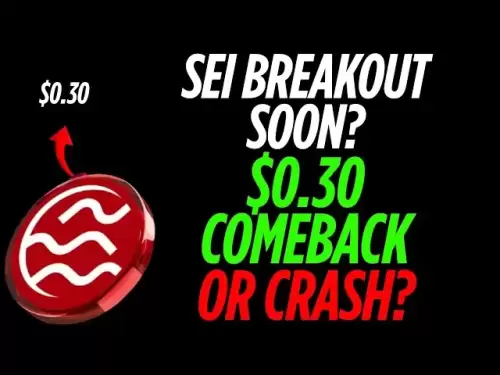-
 Bitcoin
Bitcoin $109,583.2239
0.19% -
 Ethereum
Ethereum $2,583.4612
0.48% -
 Tether USDt
Tether USDt $1.0003
-0.04% -
 XRP
XRP $2.2681
0.70% -
 BNB
BNB $659.9218
-0.52% -
 Solana
Solana $151.4961
-0.37% -
 USDC
USDC $0.9999
-0.02% -
 TRON
TRON $0.2861
1.20% -
 Dogecoin
Dogecoin $0.1718
0.04% -
 Cardano
Cardano $0.5960
-0.07% -
 Hyperliquid
Hyperliquid $40.1233
2.85% -
 Sui
Sui $2.9974
2.48% -
 Bitcoin Cash
Bitcoin Cash $497.1279
-1.76% -
 Chainlink
Chainlink $13.7275
-0.22% -
 UNUS SED LEO
UNUS SED LEO $9.0241
0.70% -
 Avalanche
Avalanche $18.5536
-0.88% -
 Stellar
Stellar $0.2421
1.39% -
 Toncoin
Toncoin $2.8593
-0.51% -
 Shiba Inu
Shiba Inu $0.0...01187
-0.07% -
 Litecoin
Litecoin $90.0023
2.90% -
 Hedera
Hedera $0.1590
2.79% -
 Monero
Monero $322.1495
0.00% -
 Polkadot
Polkadot $3.5453
-1.00% -
 Dai
Dai $1.0000
-0.01% -
 Bitget Token
Bitget Token $4.5733
-1.06% -
 Ethena USDe
Ethena USDe $1.0002
-0.01% -
 Uniswap
Uniswap $7.6345
3.03% -
 Aave
Aave $279.2583
0.47% -
 Pepe
Pepe $0.0...01003
-1.52% -
 Pi
Pi $0.4941
-0.32%
What is an ERC-6551 (Token Bound Accounts)?
ERC-6551 enables NFTs to function as smart contract wallets, allowing them to hold assets, interact with dApps, and execute transactions autonomously.
Jul 03, 2025 at 09:56 pm
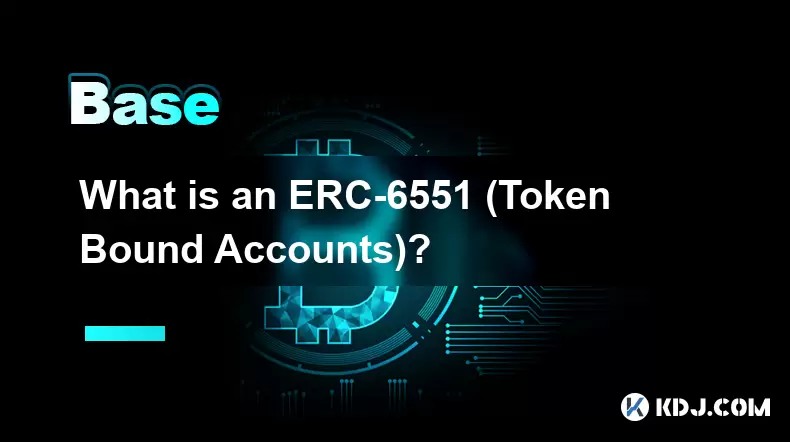
Understanding the Basics of ERC-6551
ERC-6551 stands for Ethereum Request for Comment 6551, which introduces a new standard called Token Bound Accounts (TBA). This proposal allows each ERC-721 NFT to have its own smart contract account, effectively turning every NFT into a fully functional wallet. Unlike traditional externally owned accounts (EOAs), these token-bound accounts are programmable and can interact with decentralized applications (dApps), manage assets, and even execute transactions autonomously.
The core idea behind this standard is to enhance the utility of NFTs beyond simple ownership or collectibility. With token-bound accounts, an NFT can now hold ETH, other tokens, and even interact with DeFi protocols. This opens up a wide range of use cases that were previously impossible or cumbersome under existing standards.
How Token Bound Accounts Work
A Token Bound Account is created through a registry smart contract that maps each ERC-721 token ID to a unique account address. When someone owns an NFT, they can query the registry to find the associated account address. This account is not controlled by a private key but instead follows a set of rules defined in its smart contract logic.
Here’s how it works step-by-step:
- A user owns a specific ERC-721 token ID.
- The ERC-6551 registry generates a corresponding account address based on the token's contract address and its ID.
- This generated address can then receive ETH or other tokens.
- The owner of the NFT can trigger transactions from the bound account, provided the execution meets predefined conditions.
This model ensures that the NFT and its associated account remain linked, and when the NFT is transferred, the account is also transferred seamlessly.
Use Cases Enabled by ERC-6551
One of the most exciting aspects of ERC-6551 is the flexibility it offers in terms of application development. Here are some notable use cases:
- NFT-Based DAO Membership: An NFT representing DAO membership can now hold governance tokens and vote directly without needing the holder to manually move funds.
- Loyalty Programs: Brands can issue NFTs that act as loyalty cards, where points or rewards are stored directly in the token-bound account.
- Gaming Assets: In-game items represented as NFTs can earn or store in-game currency, allowing players to interact with game economies more deeply.
- Decentralized Identity: Token-bound accounts can serve as identity wallets, storing verifiable credentials or attestations tied to the NFT owner.
These scenarios demonstrate how token-bound accounts significantly expand the capabilities of NFTs, making them more than just static digital collectibles.
Technical Implementation Details
To implement ERC-6551, developers need to deploy two main components: the registry contract and the account contracts.
The registry contract serves as the central hub that determines the account address for any given ERC-721 token ID. It uses deterministic address generation techniques like CREATE2 to ensure consistency and prevent collisions.
Each token-bound account is essentially a proxy contract that delegates calls to a master implementation contract. This allows for gas-efficient deployment and upgrades without affecting individual accounts.
Key functions within the registry include:
account(): Returns the account address for a given token.initializeAccount(): Deploys the account contract if it doesn’t already exist.validateSignatures(): Verifies that transaction signatures originate from the rightful NFT owner.
Developers must also ensure compatibility with existing ERC-1271 standards for signature validation, enabling off-chain signed messages to be verified on-chain.
Integration with Other Standards
ERC-6551 does not operate in isolation; it complements and enhances several other Ethereum standards:
- ERC-721: As the foundation, every token-bound account is tied to a specific ERC-721 token ID.
- ERC-4337 (Account Abstraction): Token-bound accounts benefit from account abstraction principles, such as batched transactions and paymasters, improving usability and efficiency.
- ERC-1155: While primarily designed for ERC-721, future extensions may allow ERC-6551-like functionality for semi-fungible tokens.
Interoperability with these standards makes ERC-6551 a powerful tool in building next-generation NFT experiences.
Frequently Asked Questions (FAQ)
Q: Can any ERC-721 token support Token Bound Accounts?
A: Not all ERC-721 tokens automatically support token-bound accounts. Developers need to integrate the ERC-6551 registry or compatible infrastructure for this functionality to be available.
Q: What happens to the bound account when the NFT is transferred?
A: The token-bound account remains linked to the token ID, so when ownership changes, the new owner gains control over the associated account and its contents.
Q: Is there a way to recover funds if the NFT is lost or stolen?
A: Since the token-bound account is tied to the token ownership, losing the NFT means losing access to the account. Recovery depends on whether the NFT has recovery mechanisms built-in or if the attacker didn't drain the account before transfer.
Q: How does ERC-6551 affect gas fees?
A: Deploying and interacting with token-bound accounts may incur additional gas costs due to contract creation and execution. However, optimizations like batch transactions and paymasters (via ERC-4337) can help reduce these expenses.
Disclaimer:info@kdj.com
The information provided is not trading advice. kdj.com does not assume any responsibility for any investments made based on the information provided in this article. Cryptocurrencies are highly volatile and it is highly recommended that you invest with caution after thorough research!
If you believe that the content used on this website infringes your copyright, please contact us immediately (info@kdj.com) and we will delete it promptly.
- BONK Price Prediction: Meme Coin Mania and What's Next?
- 2025-07-04 12:30:13
- NYAG, Stablecoins, and FDIC Protections: Navigating the Regulatory Maze
- 2025-07-04 13:10:15
- Level Up Your DeFi Game: Phantom Wallet and the Ultimate DeFi Experience
- 2025-07-04 13:10:15
- Bitcoin Surge: Breaking Down the $109,000 Barrier and the Road to $165,000?
- 2025-07-04 12:30:13
- Solana ETF Inflows & Snorter Token: A New Era for Meme Coin Trading?
- 2025-07-04 12:50:12
- Ripple, Stablecoin, and First Bank: Decoding the Latest Moves in Crypto
- 2025-07-04 12:50:12
Related knowledge

What is a token generation event (TGE)?
Jul 04,2025 at 07:14am
Understanding the Basics of a Token Generation Event (TGE)A Token Generation Event (TGE) refers to the process through which a blockchain project creates and distributes its native tokens to investors, participants, or stakeholders. This event is often associated with new cryptocurrency projects launching on platforms like Ethereum, Binance Smart Chain,...

What is a block explorer API?
Jul 04,2025 at 05:07am
Understanding the Role of a Block Explorer APIA block explorer API is a crucial interface that enables developers and users to interact programmatically with blockchain data. Unlike traditional APIs used in web services, a block explorer API specifically provides access to blockchain-related information such as transaction details, wallet balances, bloc...
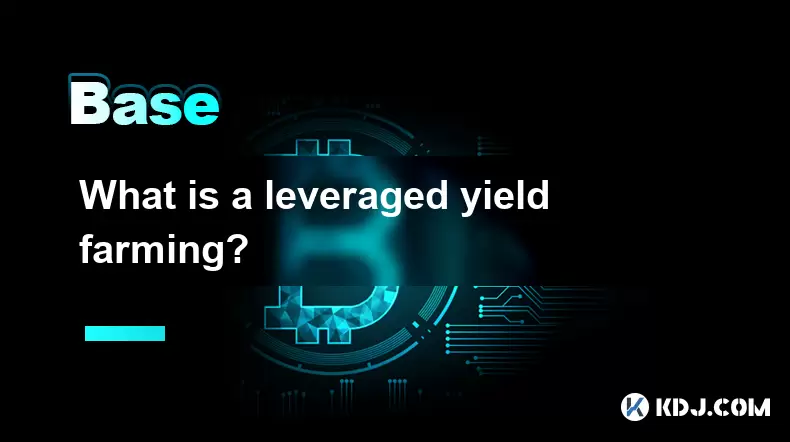
What is a leveraged yield farming?
Jul 04,2025 at 09:36am
Understanding Leveraged Yield FarmingLeveraged yield farming is a more advanced form of yield farming, which itself is a popular method in the decentralized finance (DeFi) ecosystem to earn returns by providing liquidity to various protocols. In traditional yield farming, users deposit tokens into a DeFi platform and earn rewards in return, often in the...

What is open interest in derivatives?
Jul 03,2025 at 02:49pm
Understanding Open Interest in DerivativesOpen interest is a critical metric used in the cryptocurrency derivatives market, particularly when analyzing futures and options contracts. It represents the total number of outstanding contracts that have not been settled or closed by either party involved. Unlike trading volume, which counts all trades made i...
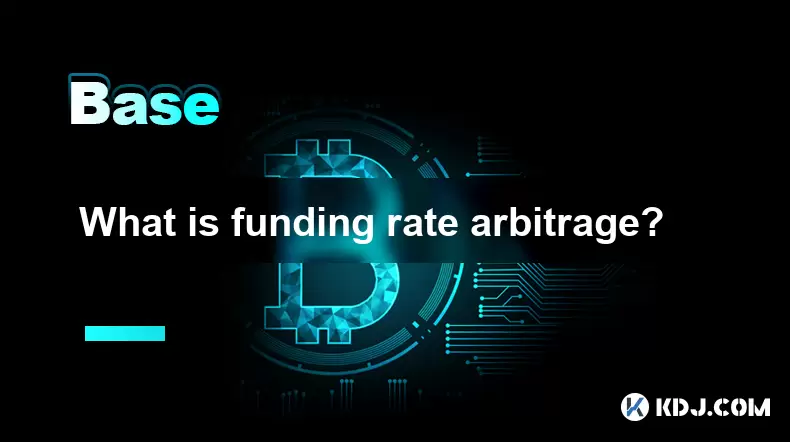
What is funding rate arbitrage?
Jul 04,2025 at 11:43am
Understanding Funding Rate Arbitrage in the Cryptocurrency MarketFunding rate arbitrage is a trading strategy employed by crypto traders to exploit differences in funding rates across various perpetual futures exchanges. In perpetual contracts, funding rates are periodic payments made between long and short traders depending on whether the price of the ...
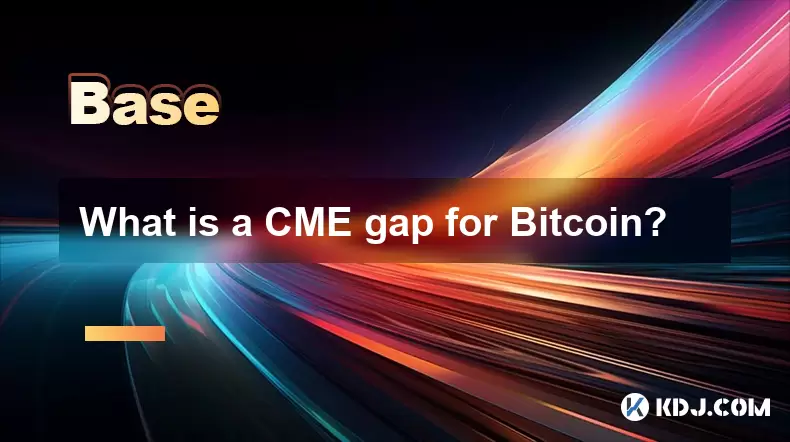
What is a CME gap for Bitcoin?
Jul 03,2025 at 05:49pm
Understanding the Concept of a CME GapA CME gap refers to a discrepancy in price between the closing price of Bitcoin on the Chicago Mercantile Exchange (CME) and its opening price when trading resumes. This phenomenon occurs because the CME operates during specific hours, typically aligned with traditional market hours, while cryptocurrency markets ope...

What is a token generation event (TGE)?
Jul 04,2025 at 07:14am
Understanding the Basics of a Token Generation Event (TGE)A Token Generation Event (TGE) refers to the process through which a blockchain project creates and distributes its native tokens to investors, participants, or stakeholders. This event is often associated with new cryptocurrency projects launching on platforms like Ethereum, Binance Smart Chain,...

What is a block explorer API?
Jul 04,2025 at 05:07am
Understanding the Role of a Block Explorer APIA block explorer API is a crucial interface that enables developers and users to interact programmatically with blockchain data. Unlike traditional APIs used in web services, a block explorer API specifically provides access to blockchain-related information such as transaction details, wallet balances, bloc...

What is a leveraged yield farming?
Jul 04,2025 at 09:36am
Understanding Leveraged Yield FarmingLeveraged yield farming is a more advanced form of yield farming, which itself is a popular method in the decentralized finance (DeFi) ecosystem to earn returns by providing liquidity to various protocols. In traditional yield farming, users deposit tokens into a DeFi platform and earn rewards in return, often in the...

What is open interest in derivatives?
Jul 03,2025 at 02:49pm
Understanding Open Interest in DerivativesOpen interest is a critical metric used in the cryptocurrency derivatives market, particularly when analyzing futures and options contracts. It represents the total number of outstanding contracts that have not been settled or closed by either party involved. Unlike trading volume, which counts all trades made i...

What is funding rate arbitrage?
Jul 04,2025 at 11:43am
Understanding Funding Rate Arbitrage in the Cryptocurrency MarketFunding rate arbitrage is a trading strategy employed by crypto traders to exploit differences in funding rates across various perpetual futures exchanges. In perpetual contracts, funding rates are periodic payments made between long and short traders depending on whether the price of the ...

What is a CME gap for Bitcoin?
Jul 03,2025 at 05:49pm
Understanding the Concept of a CME GapA CME gap refers to a discrepancy in price between the closing price of Bitcoin on the Chicago Mercantile Exchange (CME) and its opening price when trading resumes. This phenomenon occurs because the CME operates during specific hours, typically aligned with traditional market hours, while cryptocurrency markets ope...
See all articles























